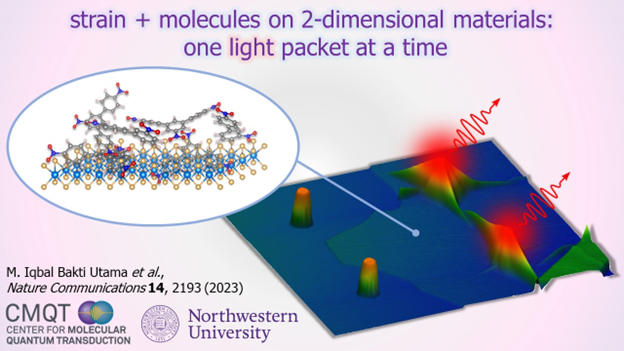Facility Address
| NUANCE - Keck-II Technological Institute - AG72 2145 Sheridan Road, Evanston, IL 60208-3108 |
The Keck-II Center was established in late 2001 through the support of W. M. Keck Foundation. Keck-II also receives support from the Soft and Hybrid Nanotechnology Experimental (SHyNE) Resource (NSF ECCS-1542205); the MRSEC program (NSF DMR-1121262) at the Materials Research Center; the International Institute for Nanotechnology (IIN); and the State of Illinois, through the IIN. Keck-II facilitates research, collaboration, education and outreach in all science from soft biological matter to hard physical matter, specializing in surface analysis and nano-scale characterization.
Featured Article - Nature Communications, 2023

Single-photon emitters, i.e., a material that produces exactly one quantum energy packet of light at a time, are an important building block for future technologies in the field of quantum information sciences. Typically, single-photon emitters can be produced in 2-dimensional (2D) semiconductors such as monolayer tungsten diselenide (WSe2) by straining the material mechanically. However, this method typically produces complicated spectral line shapes that limit their applications.
In this research paper, we report a new way to improve the properties of quantum emitters in monolayer WSe2. By combining localized mechanical strain with a surface functionalization technique inspired by molecular chemistry and surface science, we were able to simplify the light emission spectrum from the material. In particular, our “chemomechanical” approach produces emission features from the monolayer WSe2 that are better isolated energetically and single-photons with higher purity.
With the use of ESCALAB XPS at the Keck-II facility, we revealed that the nature of the interaction between the monolayer WSe2 and the functionalizing nitrophenyl oligomer is primarily non-covalent physisorption.
This work significantly broadens the parameter space for controlling quantum emission in 2D materials. In addition, our work has also offered a new way to integrate chemistry and nanophotonics, which are two important areas of investigation in materials science.
| NUANCE - Keck-II Technological Institute - AG72 2145 Sheridan Road, Evanston, IL 60208-3108 |
| NUANCE - Keck-II Northwestern University Technological Institute - A173 2145 Sheridan Road, Evanston, IL 60208-3108 |